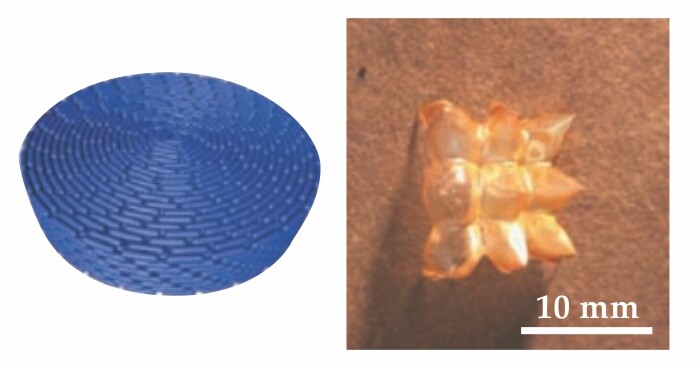A pop-up rubbery material that can unpop
DOI: 10.1063/PT.3.2772
A substance that stores flat, transforms into a three-dimensional shape on demand, and reverts to flatness once the job is done could improve the portability of myriad devices and might even find applications as biomedical implants. Now Timothy J. White (Air Force Research Laboratory) and colleagues have created such a material by carefully patterning thin liquid-crystal domains into a rubber called a liquid-crystal elastomer (LCE). Although liquid crystals flow like a liquid, their molecules are aligned. And when heated, illuminated, or exposed to electromagnetic fields, the crystals’ molecular order can be disrupted, which causes the crystals to contract along that alignment direction. The left figure is a schematic representation of a 3-mm-diameter pattern induced by White and colleagues in one of their experiments. As illustrated, liquid- crystal monomers line up end to end in concentric circles. Once patterned, the monomers are polymerized. When heated, the circular polymer chains contract along their alignment axes; to conserve volume, the LCE expands radially. With their circumferences decreasing and radii increasing, the liquid-crystal circles can’t remain in a plane: The LCE pops into the third dimension and assumes a conical shape. The right figure shows an example of an LCE created with nine circular patterns. When cooled, the process reverses and the LCE once again becomes flat. (T. H. Ware et al., Science 347, 982, 2015, doi:10.1126/science.1261019

